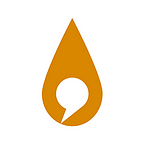Journey to South Korea, or, How I was struck by an apple
Andrew Hobbs shares his impressions from a reporting exchange to South Korea in late 2019.
I didn’t expect apples, but there they were — some of the largest I’ve ever seen at an empty market stall at 10:00 on Saturday morning outside the Sosu Seowon Neo-Confucian Academy, near Yeongju in central South Korea.
As the editor of Farms & Farm Machinery I had arrived in South Korea ready to write about rice and soybeans, as well as the local appetite for Australian beef. (Which I did later write about, here).
But I hadn’t planned for the apples of Yeongju, which we saw in fibreglass tributes at roadside shops, growing in orchards as we climbed the path to the ancient Buseoksa Temple, and diced as a kimchi alongside salted mackerel, another regional delicacy.
I hadn’t anticipated the “No to Japan” notices tied to streetlamps on those same roads — a sign of the trade war between South Korea and Japan that dates back to a 2018 court ruling that Koreans could sue Japanese companies for wartime damage.
And I also hadn’t anticipated seeing those signs back in Seoul that afternoon, held aloft during a candlelit vigil outside the Japanese Embassy in what the protestors told me was a regular weekend event.
Our guides for the week-long tour, employed by the English-language Korea Herald newspaper, told us that protests were “a national sport”. Over the week they started seeming commonplace, with some campaigning for the pardon of the impeached and ousted former president Park Geun-hye, others for a US invasion of North Korea.
The Korea Press Foundation, which along with the Walkley Foundation hosts the Australia-Korea Media Exchange, did not shy away from explaining the challenge — a challenge that is becoming exacerbated by the rising numbers of Koreans turning away from TV and newspaper reporting.
While there are over 5,000 media companies in South Korea, the KPF says most South Koreans get their news from online news aggregators such as Google and the significantly more popular Korean web portals Naver and Daum.
Also on the rise is YouTube as a news platform. One survey shows 40% of Korean online news consumers used the site to watch news-related content, compared to 17% in Australia.
The KPF observes more progressive and more conservative outlets get more views on YouTube than moderate voices, adding that the website is likely to become more popular as Korea’s expansive 5G network continues to grow.
But these online channels have also helped foster wider social movements in South Korea, we learned in our meeting with Na-Young Lee, a professor of sociology at Chung-Ang University and a leading voice on women’s issues in Korea.
Professor Lee explained the rise of the #escapethecorset movement, continuing to gain currency, where young Korean women destroy expensive hairstyles, clothes and makeup, posting proof in images on social media in protest of beauty standard so strong it has become less an ideal and more an expectation that every woman, everywhere, must meet.
(For the record, every man with knowledge of South Korea to whom I have mentioned this meeting has expressed surprise. Not at the wisdom of speaking to Professor Lee, but rather that such a person, in such a position, existed at all.)
At the same time, alongside growing interest in Korean film and the K-Pop scene, Western demand for South Korean beauty products is stronger than ever, Rowan Petz of the Australian Chamber of Commerce in Korea explained — saying Korean interest in Australia’s café culture is also growing.
Korea’s Chaebols — including Samsung, Hyundai and Kia — remain dominant, but we saw a push towards something new. A visit to one of many branches of the Seoul Start-Up Hub revealed a hive of activity, with everyone from app developers to cooks working in test kitchens with the aim of generating the next big thing.
It all came into stark relief on our last day, when we were scheduled to visit the famous Demilitarised Zone, only for the tour to be cancelled at the last minute due to an outbreak of Swine Fever — a disease that threatened production of pork throughout China, Japan and both North and South Korea.
For me it was an agricultural story, due to the potential knock-on effects for Australian exports.
But it’s a story I can now report with a better understanding of its political and cultural importance: whether there will be protests, what YouTubers might be saying and whether South Korean households might be switching to mackerel for dinner, and what that might mean for side dishes.
I didn’t anticipate apples, Reader, but there they were.
Andrew Hobbs is editor of Farms & Farm Machinery. He traveled to Korea in October 2019 as part of the Australia Korea Media Exchange, thanks to support from the Korea Press Foundation.
